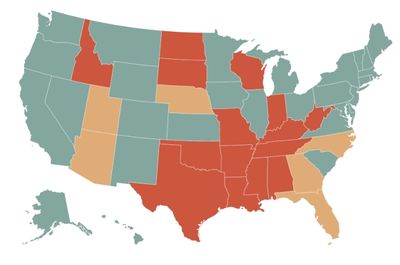Abortion
Abortion is the termination of a pregnancy by removing or expulsion an embryo or fetus. An abortion that occurs without intervention is known as a miscarriage or "spontaneous abortion" and occurs in approximately 30% to 40% of pregnancies. When deliberate steps are taken to end a pregnancy, it is called an induced abortion, or less frequently, "induced miscarriage." The unmodified word abortion generally refers to an induced abortion. Although it prevents the birth of a child, abortion is not generally considered birth control (another term for contraception).
When properly done, abortion is one of the safest procedures in medicine, but unsafe abortion is a major cause of maternal death, especially in the developing world, while making safe abortion legal and accessible reduces maternal deaths. It is safer than childbirth, which has 14 times higher risk of death in the United States.
Modern methods use medication or surgery for abortions. The drug mifepristone in combination with prostaglandin, appears to be as safe and effective as surgery during the first and second trimester of pregnancy. The most common surgical technique involves dilating the cervix and using a suction device. Birth control, such as the pill or intrauterine devices, can be used immediately following abortion. When performed legally and safely on a woman who desires it, induced abortions do not increase the risk of long-term mental or physical problems. In contrast, unsafe abortions (performed by unskilled individuals, with hazardous equipment, or in unsanitary facilities) cause 47,000 deaths and 5 million hospital admissions each year. The World Health Organization states that "access to legal, safe and comprehensive abortion care, including post-abortion care, is essential for attaining the highest possible sexual and reproductive health."
Around 56 million abortions are performed each year globally, with about 45% done unsafely. Abortion rates changed little between 2003 and 2008, before which they decreased for at least two decades as access to family planning and birth control increased. As of 2018, 37% of the world's women had access to legal abortions without limits as to the reason. Countries that permit abortions have different limits on how late in pregnancy abortion is allowed. Abortion rates are similar between countries that ban abortion and countries that allow it.
Historically, abortions have been attempted using herbal medicines, sharp tools, forceful massage, or other traditional methods. Abortion laws and cultural or religious views of abortions are different around the world. In some areas, abortion is legal only in specific cases such as rape, fetal defects, poverty, the risk to a woman's health, or incest. There is debate over the moral, ethical, and legal issues of abortion. Those who oppose abortion often argue that an embryo or fetus is a person with a right to life, and thus equate abortion with murder. Those who support the legality of abortion often argue that it is part of a woman's right to make decisions about her own body. Others favor legal and accessible abortion as a public health measure.
- More information is available at [ Wikipedia:Abortion ]
Chat rooms • What links here • Copyright info • Contact information • Category:Root

